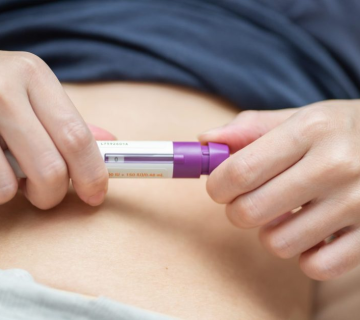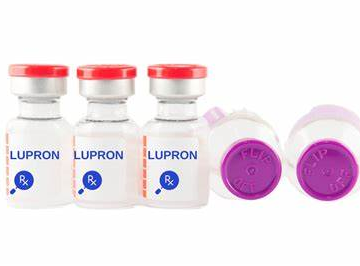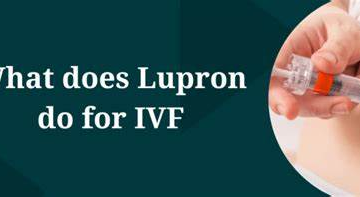
Deciding to start or grow a family later in life is becoming more common, especially for women over 40. Maybe you’ve been focusing on your career, waiting for the right partner, or just weren’t ready earlier. Whatever your reason, you’re not alone—more people than ever are exploring fertility options in their 40s. One of the most popular paths is in vitro fertilization (IVF), a treatment that’s helped millions become parents. But what does IVF over 40 really look like? Is it worth it? And how can you make the journey easier?
This guide is here to walk you through everything you need to know about IVF after 40. We’ll cover how age affects fertility, your treatment options, success rates, costs, emotional challenges, and even some lesser-known tips to boost your chances. Whether you’re just starting to think about IVF or you’re already in the process, this article will give you clear, practical advice and the latest info to help you feel confident and prepared.
Why Fertility Gets Trickier After 40
Let’s start with the basics: why does getting pregnant get harder as you age? It’s all about your eggs.
The Egg Countdown Clock
Women are born with all the eggs they’ll ever have—about 1-2 million. By the time you hit puberty, that number drops to around 300,000. Each month, your body releases one egg (sometimes more), but many others are lost naturally over time. By age 40, you’re down to about 10,000 eggs, or just 3% of what you started with. That’s a big drop!
But it’s not just about quantity—quality matters too. As you age, your eggs are more likely to have chromosomal issues, like missing or extra pieces. This can make it harder for them to fertilize, implant, or grow into a healthy baby.
Science Says: Age Matters
Studies show that fertility starts declining slowly after 32, picks up speed at 35, and drops sharply after 40. Here’s a quick look at your natural chances of getting pregnant per cycle:
-
- Age 30: 20% chance
-
- Age 40: 5% chance
-
- Age 45: 1% chance
That’s why IVF often becomes the go-to solution—it skips some of the natural hurdles and gives you a fighting chance.
What This Means for You
If you’re over 40, your body might not respond as well to fertility drugs, and the embryos you create might have a lower chance of sticking. But don’t lose hope—IVF can still work, and there are ways to tweak the process to fit your situation. Let’s explore how.
How IVF Works (and Why It’s Different Over 40)
IVF is like a science-powered shortcut to pregnancy. Here’s the rundown, plus what changes when you’re over 40.
The IVF Process in 5 Simple Steps
-
- Boosting Your Eggs: You take medications (usually shots) to make your ovaries produce more eggs than the usual one per month.
-
- Egg Retrieval: A doctor uses a tiny needle to collect those eggs from your ovaries while you’re under light sedation.
-
- Fertilization: In a lab, your eggs meet sperm (from your partner or a donor) to create embryos.
-
- Embryo Growth: The embryos grow for 3-5 days, and the healthiest ones are picked.
-
- Transfer: One or two embryos are placed into your uterus, hoping they’ll implant and grow.
What’s Different After 40?
-
- Fewer Eggs: Your ovaries might not produce as many eggs, even with medication. Instead of 10-15 eggs, you might get 3-5.
-
- Lower Quality: More of your eggs might have chromosomal glitches, so fewer turn into healthy embryos.
-
- Higher Miscarriage Risk: Even if an embryo implants, the chance of miscarriage jumps to 30-50% over 40, compared to 15-20% in your 30s.
A Real-Life Example
Imagine Sarah, 42, starting IVF. She gets 4 eggs retrieved, but only 2 fertilize, and just 1 makes it to the embryo stage. That one embryo has a shot at success, but the odds are slimmer than for someone younger. That’s the reality for many women over 40—but it’s not the whole story.
Your IVF Options Over 40
IVF isn’t one-size-fits-all. Here are the main paths you can take, plus some unique twists for women over 40.
1. Traditional IVF with Your Own Eggs
This is the classic route: stimulate your ovaries, retrieve your eggs, and use your partner’s (or donor) sperm.
-
- Pros: You get to use your own DNA, which feels special to many.
-
- Cons: Success rates drop after 40 due to egg quality.
-
- Success Rates: About 13-16% per cycle at age 40, falling to 5% by 43 and 1% by 45 (CDC data, 2021).
✔️ Tip: Ask your doctor about preimplantation genetic testing (PGT-A). It checks embryos for chromosomal issues before transfer, boosting your chances of a healthy pregnancy.
2. Mini-IVF: Less Meds, More Focus
Mini-IVF uses lower doses of drugs to get fewer—but hopefully higher-quality—eggs.
-
- Why It’s Great Over 40: Heavy stimulation might not work well if your egg reserve is low, and mini-IVF is gentler on your body.
-
- Cost: Often cheaper—around $5,000-$7,000 vs. $12,000-$15,000 for traditional IVF.
-
- Success Story: A 44-year-old woman in St. Louis used mini-IVF, got one good embryo, and had a healthy baby (Infertile.com, 2021).
❌ Heads-Up: You might need multiple cycles to bank enough embryos, which can add up in time and cost.
3. Donor Eggs: A Game-Changer
Here, you use eggs from a younger donor (usually 20s or 30s), fertilized with your partner’s or donor sperm.
-
- Why It Works: Younger eggs mean higher success—up to 50-60% per cycle, even if you’re over 40.
-
- Emotional Angle: You carry the baby, but it won’t have your DNA. That’s a big decision for some.
-
- Cost: $20,000-$30,000 per cycle, including donor fees.
✔️ Tip: Look into “frozen egg banks” for a cheaper, faster option than fresh donor cycles.
4. Natural IVF: No Drugs, Just You
Natural IVF skips stimulation meds and collects the one egg your body picks each month.
-
- Best For: Women with low egg counts who want a low-intervention approach.
-
- Success Rates: Lower than traditional IVF (around 5-10% per cycle over 40), but it’s less stressful.
❌ Watch Out: It’s a slower process—you only get one shot per cycle.
Which Should You Choose?
Here’s a quick table to help:
| Option | Success Rate (Over 40) | Cost | Best If You Want… |
|---|---|---|---|
| Traditional IVF | 13-16% | $12K-$15K | To use your own eggs |
| Mini-IVF | 10-15% | $5K-$7K | Gentler treatment, lower cost |
| Donor Eggs | 50-60% | $20K-$30K | Higher success, okay with donor DNA |
| Natural IVF | 5-10% | $4K-$6K | No meds, minimal intervention |
Talk to your doctor about your ovarian reserve (how many eggs you have left) to pick the best fit.
Success Rates: What to Expect Over 40
Numbers don’t lie, so let’s break down what IVF success looks like after 40. These stats come from the CDC’s 2021 ART Report and recent studies.
By Age with Your Own Eggs
-
- Age 40: 16% live birth rate per cycle
-
- Age 41-42: 10% per cycle
-
- Age 43-44: 4% per cycle
-
- Age 45+: Less than 1% per cycle
Cumulative Success: Keep Trying
If you do multiple cycles, your odds go up:
-
- Age 40: 28% after 2-3 cycles
-
- Age 43: 10-15% after 3 cycles
-
- Age 45+: Still under 5%, even with retries
Donor Eggs Crush It
Using donor eggs flips the script:
-
- Any Age Over 40: 50-60% per cycle, because egg age matters more than your age.
What Boosts Your Odds?
-
- Healthy Embryos: PGT-A can double your implantation rate by picking chromosomally normal embryos.
-
- Lifestyle: A 2022 study in Fertility and Sterility found women over 40 on a Mediterranean diet (think veggies, fish, olive oil) had a 20% higher success rate.
-
- Clinic Quality: Top clinics report 5-10% better outcomes than the national average.
✔️ Action Step: Check your clinic’s success rates on the CDC website or SART.org—they vary wildly!
The Emotional Rollercoaster of IVF Over 40
IVF isn’t just about shots and lab visits—it’s a mental and emotional marathon. Here’s how to cope.
Common Feelings
-
- Hope: “This could be it!”
-
- Fear: “What if it doesn’t work?”
-
- Guilt: “Should I have started sooner?”
-
- Exhaustion: The process can wear you down.
Why It’s Tougher Over 40
You might feel extra pressure because time’s ticking, or you’re comparing yourself to younger friends who got pregnant easily. Plus, lower success rates can make every negative test sting more.
Real Talk: A Mom’s Story
Lisa, 41, went through three IVF cycles. “The first two failures broke me,” she says. “I’d cry in the shower so my husband wouldn’t hear. But my clinic had a support group, and hearing other women’s stories kept me going.” Her third cycle worked—she’s now mom to a 2-year-old.
Coping Tips
✔️ Find Your People: Join an online forum (like Reddit’s r/infertility) or a local support group.
✔️ Set Boundaries: Tell family, “I’ll update you when I’m ready.”
✔️ Self-Care: Try yoga, journaling, or even a funny movie—whatever lifts you up.
❌ Avoid: Endless Googling—it’ll just stress you out.
Costs and How to Pay for IVF Over 40
IVF isn’t cheap, and over 40, you might need extra cycles or add-ons. Let’s break it down.
Price Tags
-
- Traditional IVF: $12,000-$15,000 per cycle
-
- Mini-IVF: $5,000-$7,000
-
- Donor Eggs: $20,000-$30,000
-
- Extras: Meds ($3K-$5K), PGT-A ($3K-$5K), freezing embryos ($1K/year)
Insurance Reality
Only 19 U.S. states mandate some fertility coverage, and even then, it’s spotty. Most women over 40 pay out of pocket, especially if they’ve waited longer to try.
Money-Saving Hacks
✔️ Clinics Abroad: Places like Spain or Mexico offer IVF for $5K-$8K with solid success rates.
✔️ Grants: Look into BabyQuest or CNY Fertility grants—some cover up to $15K.
✔️ Mini-IVF: Cheaper upfront, though you might need more tries.
✔️ Tax Breaks: IVF costs can qualify for medical deductions—talk to a tax pro.
Budgeting Tip
Plan for 2-3 cycles if using your own eggs. A $30K budget might cover it, but donor eggs could push you to $50K+ if retries are needed.
Boosting Your Chances: Practical Steps
You can’t turn back time, but you can stack the deck in your favor. Here’s how.
Lifestyle Tweaks
-
- Eat Smart: Go for antioxidants (berries, nuts) and cut processed junk. A 2023 study linked better egg quality to diets high in omega-3s.
-
- Move It: 30 minutes of walking or yoga daily improves blood flow to your ovaries.
-
- Sleep: 7-8 hours nightly balances hormones—crucial for IVF.
❌ Skip: Smoking, excess alcohol, and too much caffeine—they hurt egg quality.
Supplements to Consider
-
- CoQ10: 200-600 mg daily may improve egg energy (2022 study in Reproductive Biology).
-
- Vitamin D: Low levels are common over 40—aim for 2,000 IU daily after a blood test.
-
- DHEA: Some docs prescribe it for low ovarian reserve, but check with yours first.
✔️ Pro Tip: Always ask your doctor before starting supplements—too much can backfire.
Timing Matters
Start ASAP. A 2023 UK study found women who began IVF within 6 months of trying naturally had a 15% higher success rate than those who waited 2 years.
Lesser-Known IVF Hacks Over 40
Here’s where we dig into stuff you won’t find in every blog—unique angles to give you an edge.
1. Reproductive Immunology
Sometimes your immune system sees an embryo as a “foreign invader” and attacks it. This might explain repeat miscarriages or failed transfers.
-
- Test It: Ask about NK cell testing or immune panels.
-
- Fix It: Treatments like steroids or intralipids (a fat infusion) can calm your immune system.
2. Back-to-Back Mini-IVF
Instead of one big cycle, do 2-3 mini-IVF rounds to “bank” embryos. A 2021 case study showed a 43-year-old getting 6 embryos this way, with a successful birth after.
3. Sperm Quality Counts Too
Men over 40 can have DNA damage in sperm, lowering embryo quality. A 2022 study found using sperm selection techniques (like Zymot) improved outcomes by 10%.
✔️ Ask About: Sperm DNA fragmentation tests for your partner.
4. Uterine Receptivity Testing
Your uterus might not be ready when the embryo is. An ERA (endometrial receptivity analysis) test pinpoints the perfect transfer day—boosting implantation by up to 20% (2023 data).
Risks and Realities Over 40
IVF isn’t risk-free, especially later in life. Here’s what to watch for.
Health Risks
-
- Ovarian Hyperstimulation Syndrome (OHSS): Rare (1-5%), but meds can overstimulate your ovaries, causing pain or bloating.
-
- Multiple Births: Twins or triplets raise risks like preterm birth—more common with IVF.
-
- Pregnancy Complications: High blood pressure and gestational diabetes spike after 40.
Emotional Risks
Burnout is real. A 2022 survey found 40% of women over 40 stopped IVF due to emotional fatigue, not just cost or failure.
✔️ Plan Ahead: Decide how many cycles you’re willing to try—3 is a common limit for own-egg IVF over 40.
Latest Research: What’s New in 2025?
Science keeps moving, and 2025 brings fresh hope for IVF over 40. Here’s the scoop.
Stem Cell Buzz
Researchers are testing ways to “rejuvenate” ovaries using stem cells. A 2024 pilot study in Nature saw a 10% bump in egg numbers for women 40-45. It’s early, but exciting!
AI-Powered Embryo Selection
New AI tools analyze embryo images better than human eyes, picking winners with 15% more accuracy (2025 Fertility and Sterility report).
Mitochondrial Boost
Mitochondria power your eggs. A 2024 trial used mitochondrial transfers to improve egg quality in women over 40, with a 12% success rate increase.
✔️ Ask Your Clinic: Are they using AI or mitochondrial therapies? Not all do yet.
Your IVF Action Plan Over 40
Ready to start? Here’s a step-by-step guide.
Step 1: Get Tested
-
- For You: AMH (egg reserve), FSH (ovarian function), ultrasound (follicle count).
-
- For Your Partner: Sperm count and DNA fragmentation.
Step 2: Pick a Clinic
-
- Check success rates for women over 40 on CDC or SART.
-
- Look for mini-IVF or donor egg expertise.
Step 3: Prep Your Body
-
- 3 months of healthy eating, exercise, and supplements.
-
- Quit smoking/alcohol now—every day counts.
Step 4: Plan Finances
-
- Budget for 2-3 cycles or one donor egg round.
-
- Apply for grants or explore clinics abroad.
Step 5: Start Treatment
-
- Choose your IVF type with your doctor.
-
- Lean on support—friends, groups, or a therapist.
FAQs: Your Top Questions Answered
Q: Can I get pregnant naturally at 42 instead of IVF?
A: Yes, but it’s rare—about a 5% chance per month. IVF bumps that to 10-16% per cycle with your eggs.
Q: How many cycles should I try?
A: Most experts say 2-3 with your own eggs. After that, success drops, and donor eggs might be smarter.
Q: Does stress hurt my IVF chances?
A: Not directly, but a 2023 study linked high stress to lower embryo quality. Relaxation helps your body, even if it’s not a magic fix.
Q: What if I can’t afford it?
A: Look into mini-IVF, financing plans, or traveling abroad—Spain’s clinics, for example, are top-notch and half the U.S. cost.
Wrapping Up: Your Journey, Your Way
IVF over 40 isn’t easy, but it’s not impossible either. You’ve got options—traditional IVF, mini-IVF, donor eggs, or natural cycles—and each comes with its own pros, cons, and price tags. Success rates might be lower than for younger women, but with the right prep, clinic, and mindset, plenty of women over 40 bring home babies every year. The key? Start soon, stay informed, and build a support squad.
What’s your next step? Maybe it’s booking a consult, tweaking your diet, or just talking it over with someone you trust. Whatever it is, you’re in the driver’s seat.
Let’s Chat!
Have you tried IVF over 40? What worked (or didn’t)? Drop your story or questions in the comments—I’d love to hear from you! Or, if you’re still on the fence, tell me what’s holding you back. Let’s keep this conversation going.




No comment